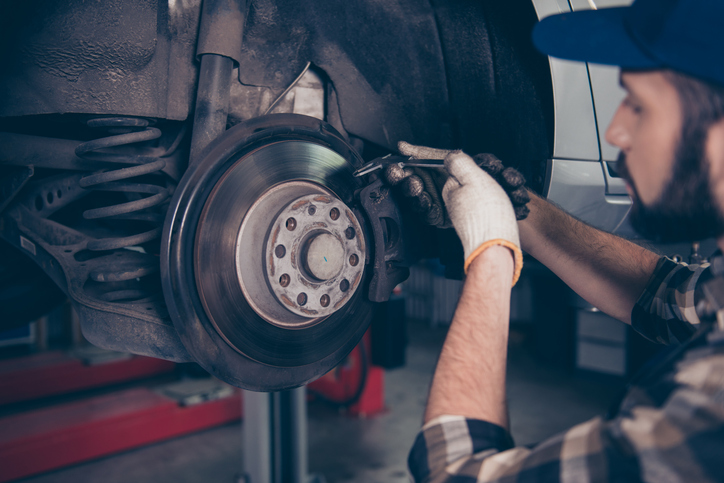
The braking system on a car is one of its most important safety features. Many of us can likely think of a close call on the road where solid brakes served to prevent a fender bender, or something much worse. The responsiveness of a car’s braking system, which we rely upon so dearly, usually comes down to the type of brakes it’s been fitted with.
Drum brakes and disc brakes are the two types of systems used by today’s car manufacturers, both serving their own purposes in the industry and both using the concept of applying friction to a turning wheel to halt it.
So how do these braking systems differ, and is one better than the other? Let’s take a look!
What Are Drum Brakes?
The earliest cars were all fitted with this original in-tire drum braking system. It was given its name because the design houses braking components within a metal drum that rotates in the wheel. When the brakes are applied, the wheel cylinder is helped along by hydraulic pressure to force a set of brake shoes out against the drum to create the friction that slows the vehicle.
The disadvantage of this system is that there can be heat buildup that occurs inside of the drum from the friction caused by extreme braking situations, such as slowing on a steep hill. The heat buildup can quickly wear down the brakes, reducing their overall effectiveness. Drum brakes are also less effective in rain or when driving through puddles, as the water tends to collect inside of the drum, reducing performance.
What Do Students of Auto Mechanic School Need to Know About Disc Brakes?
If you’re considering auto mechanic school, you might be wondering about the wonders of disc brakes. While patented the same year as drum brakes in 1902, it took this superior system five decades more for it to be developed into the first truly reliable caliper disc brake, fitted on the famous Jaguar C-type.
It has been a standard on performance cars ever since. Disc brakes are also widely used in most of today’s other passenger vehicles. This system uses a disc-shaped metal rotor spinning within the wheel. When the driver hits the brakes, the pressure forces a caliper to squeeze brake pads against the disc, slowing the vehicle.

With far more efficient stopping power than the drum brake, the open-air design offers this brake type the added advantages of being less prone to overheating failure. It also dries a lot faster when wet.
Which Braking System Is Better?
Anyone who wants to become a certified mechanic will soon come to know the advantages and disadvantages of each of these braking systems. Generally speaking, drum brakes overheat too quickly and don’t perform well in wet conditions. Still, drum brakes get the job done and are crucial when it comes to parking.
The all-in-one design is also much less costly to produce than disc brakes, and much cheaper to repair. When the drum has been removed, the brake shoes can be swapped out in under ten minutes, knocking down both labour and parts costs substantially.
Disc brakes are excellent for their sharp stopping ability, yet they can’t be used on a car’s parking brake system due to their tendency to expand when hot and to contract when cold. The cool-off causes a shrinking effect, causing loss of contact with the disc brake.
Car Manufacturers Make the Best of Both Worlds
Keeping the above considerations in mind, for both economic and practical reasons, many car manufacturers today fit their automobiles with both sets of brakes—typically using less costly drum brakes at the back, and using more expensive disc brakes at the front where most of a car’s braking work is needed.

Having disc brakes on all four wheels is a practice more commonly reserved for sports cars and performance cars, where even more braking power is expected and where cost is less of a consideration. Even on these cars, however, we will still usually find an added drum brake for parking.
It’s quite apparent that drum brakes and disc brakes are different from one another, but both systems play an equal role of importance in today’s car manufacturing.
Are you interested in auto service programs that provide professional training?
Contact Automotive Training Centres for more information!

